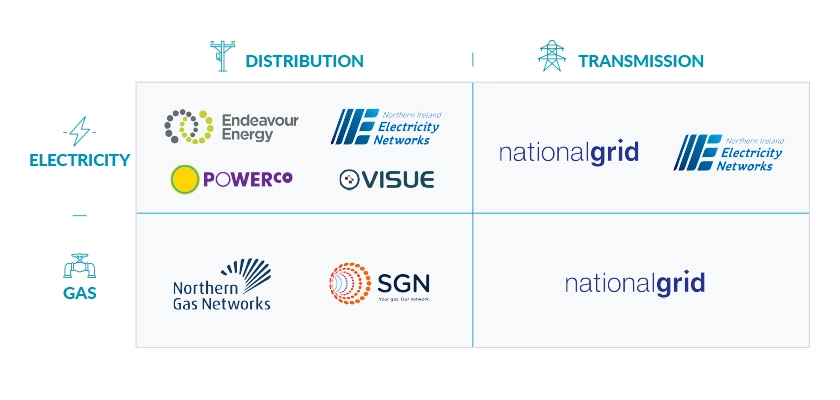Monetised Risk in the Energy Sector
Since Ofgem introduced the RIIO (Revenue = Incentives + Innovation + Outputs) framework in 2013 to incentivise UK network companies to deliver increased benefits to consumers, the concept of monetised risk has been at the centre of the process to set targets, measure outputs, and compare performance across energy networks.
The overriding objective as we move into the second price control period, RIIO-2, continues to be to provide organisations with strong incentives to meet the challenges of delivering a low carbon economy and a sustainable energy sector at a lower cost. One of the key areas in this respect is the Common Network Asset Indices Methodology (CNAIM) for electrical distribution and Network Output Measures (NOMs) for gas distribution, that provide common frameworks for performance assessment and incentives—underpinned by a data-driven approach to measure and monetise risk.
Within these methodologies, annual monetised risk is understood by modelling the different failure modes and calculating the product of the Probability of Failure (PoF) and the monetised Consequence that each Failure (CoF) could lead to. Monetising risk in this way creates a common currency across different asset classes, enabling investment strategies to be compared, trade-offs to be analysed, and ultimately, performance measures to be agreed upon with the regulator.
Copperleaf’s Decision Analytics software provides an out-of-the-box solution for both NOMs and CNAIM. Copperleaf™ has experience implementing Asset Investment Planning and Management (AIPM) best practices and the common methodologies globally, across all four quadrants of the energy sector:

In fact, Copperleaf’s advanced AIPM capability goes beyond modelling NOMs and CNAIM on existing infrastructure using the individual asset risk approach provided within the methodology, enabling organisations to:
- consider sophisticated planning scenarios for different programmes of work or projects across a variety of asset types—designed specifically with delivery considerations in mind
- incorporate a wide range of KPIs (e.g. resources, service-level agreements, financial and non-financial benefits) into the decision-making framework, to ensure the outcomes of board-level strategies are fully understood both in terms of business KPIs and measures mandated by the regulator
- allow projects that focus on network growth or expansion to be considered while also understanding their impact on existing assets and agreed output targets
In addition, Copperleaf’s Intelligent Bundling capability enables organisations to bundle asset interventions together and plan work in the most efficient and cost-effective way. This delivers savings because costs such as equipment assembly/disassembly and permitting can be shared across multiple projects, and the frequency, duration, and associated costs of service interruptions can be minimised. Combining this with the sector-specific methodologies enables development of an investment plan that is also focused on delivery and outperformance.
Accelerating Asset Management Maturity
Through our work with clients, Copperleaf has extended the core methodologies to consider additional asset classes, incorporate regional adjustments to the models, and develop innovative solutions to longstanding business challenges. Examples include:
Gas Distribution – Northern Gas Networks (NGN)
In 2017, NGN selected the Copperleaf Decision Analytics solution to support its asset risk management processes and enhance decision making for its gas distribution infrastructure across Yorkshire, the North East and northern Cumbria, England. The software will be used to develop the company’s RIIO-GD2 business plan submission, strategic asset management plan, and annual asset risk regulatory reporting (NOMs) returns.
Copperleaf and NGN worked together to configure a Value Framework that enhances the NOMs methodology—to provide a consistent mechanism for customer-focused cost-benefit analysis based on a blend of modelled and operational inputs. For example, the Value Framework allows users to consider the customer impact of traffic disruption caused by mains replacement (REPEX) schemes, and therefore to schedule programmes of work that meet regulatory targets with minimal customer inconvenience.
Electricity Transmission – National Grid Electricity Transmission (NGET)
National Grid, owner of the high-voltage electricity transmission network in England and Wales, relies on the Copperleaf product suite for project portfolio optimisation and AIPM. The system provides National Grid with a complete view of interventions and expenditure, including all maintenance and customer connection/network growth activities. In addition, Copperleaf and NGET worked together on the development of a new circuit optimisation capability that allows NGET to bundle asset interventions and minimise circuit outage requirements.
“The new circuit optimisation capability is a fantastic example of industry-leading asset management decision support, providing NGET with its first true asset management planning system—capable of combining asset risk, maintenance, and investment activity within a single solution,” stated Stefan Sadnicki, Copperleaf’s Managing Director, Europe, Middle East and Africa. “To our knowledge, no one has ever solved such a problem and organisations in the electrical transmission industry have been attempting to solve this problem since before the year 2000.”
Learn more about how Copperleaf can help your company overcome the challenges and meet—or even outperform—the high expectations of Ofgem .

